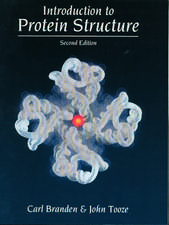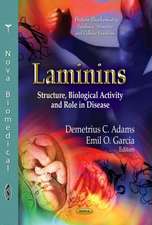Ubiquitin and the Biology of the Cell
Editat de Jan-Michael Peters, J. Robin Harris, Daniel Finleyen Limba Engleză Hardback – 30 mai 1998
| Toate formatele și edițiile | Preț | Express |
|---|---|---|
| Paperback (1) | 1219.77 lei 6-8 săpt. | |
| Springer Us – 10 iun 2013 | 1219.77 lei 6-8 săpt. | |
| Hardback (1) | 1233.52 lei 6-8 săpt. | |
| Springer Us – 30 mai 1998 | 1233.52 lei 6-8 săpt. |
Preț: 1233.52 lei
Preț vechi: 1504.29 lei
-18% Nou
Puncte Express: 1850
Preț estimativ în valută:
236.04€ • 247.06$ • 196.45£
236.04€ • 247.06$ • 196.45£
Carte tipărită la comandă
Livrare economică 31 martie-14 aprilie
Preluare comenzi: 021 569.72.76
Specificații
ISBN-13: 9780306456497
ISBN-10: 0306456494
Pagini: 472
Ilustrații: XXII, 472 p.
Dimensiuni: 156 x 234 x 35 mm
Greutate: 0.9 kg
Ediția:1998
Editura: Springer Us
Colecția Springer
Locul publicării:New York, NY, United States
ISBN-10: 0306456494
Pagini: 472
Ilustrații: XXII, 472 p.
Dimensiuni: 156 x 234 x 35 mm
Greutate: 0.9 kg
Ediția:1998
Editura: Springer Us
Colecția Springer
Locul publicării:New York, NY, United States
Public țintă
ResearchDescriere
The last several years have been a landmark period in the ubiquitin field. The breadth of ubiquitin's roles in cell biology was first sketched, and the importance of ubiquitin-dependent proteolysis as a regulatory mechanism gained general acceptance. The many strands of work that led to this new perception are re counted in this book. A consequence of this progress is that the field has grown dramatically since the first book on ubiquitin was published almost a decade ago [M. Rechsteiner (ed. ), Ubiquitin, Plenum Press, 1988]. In this span, students of the cell cycle, transcription, signal transduction, protein sorting, neuropathology, cancer, virology, and immunology have attempted to chart the role of ubi quit in in their particular experimental systems, and this integration of the field into cell biology as a whole continues at a remarkable pace. We hope that for active researchers in the field as well as for newcomers and those on the fence, this book will prove helpful for its breadth, historical perspective, and practical tips. Structural data are now available on many of the components of the ubiquitin pathway. The structures have provided basic insights into the unusual biochemical mechanisms of ubiquitination and proteasome-mediated proteolysis. Because high-speed computer graphics can convey structures more effectively than print media, we have supplemented the figures of the book with a Worldwide Web site that can display the structures in a flexible, viewer-controlled format.
Cuprins
The Ubiquitin System: Past, Present and Future Perspectives; A. Hershko. Polyubiquitin Chains; C.M. Pickart. The Ibiquitin-Conjugation System; M. Scheffner. The Deubiquitinating Enzymes; K.D. Wilkinson, M. Hochstrasser. The 20S Proteasome; A. Lupas, W. Baumeister. The 26S Proteasome; M. Rechsteiner. Function of the Proteasome in Antigen Presentation; J. Beninga, A.L. Goldberg. The N-end Rule Pathway; A. Varshavsky, et al. Ubiquitin-Dependent Degradation of Transcriptional Regulators; M. Hochstrasser, D. Kornitzer.. Role of the Ubiquitin-Proteasome Pathwayi in Nf-KB Activation; Z.J. Chen, T. Maniatis. Ubiquitination of the 053 Tumor Suppressor; J.M. Huibregtse, et al. Ubiquitination of Integral Membrane Proteins and Proteins in the Secretory Pathway; R.R. Kopito. Degradation of Ornithine Decarboxylase; P. Coffino. Ubiquitin and the Molecular Pathology of Human Disease; R.J. Mayer, et al. Index.













